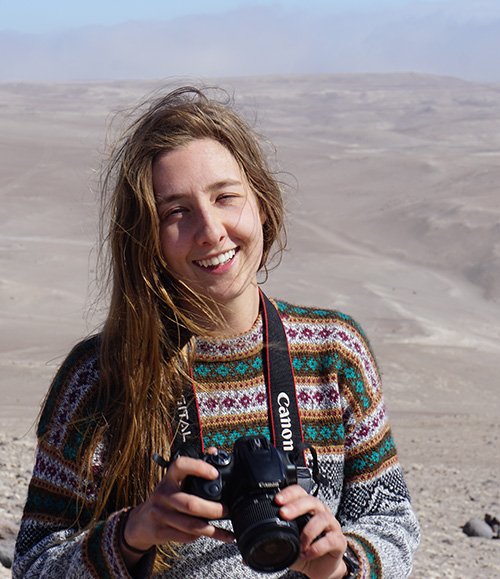Dissertation Defense: Emily Milton
Mon, October 13, 2025 10:00 AM - Mon, October 13, 2025 12:00 PM at McDonel C103
DISSERTATION DEFENSE
Emily Milton

| Emily Milton is an ESPP dual major doctoral student, a PhD candidate in Department of Anthropology, researching Andean archaeology and paleoclimatology. She is interested in human management of alpine environments and high-altitude adaptation. Presently, Emily is researching prehistoric seasonality of land tenure in Central Peru and how it relates to human residence in the Andes since the Last Ice Age. Her methods include coupling stable isotopes, microscopy, and GIS to analyze patterns of change in modern and archaeological samples. Emily received a Bachelor of Science in Anthropology and International Studies from Iowa State University in 2015, as well as a graduate certificate in Geographic Information Systems. After her BS she worked as a staff archaeologist in Golden, Colorado, before returning to school to pursue a Master of Arts in Anthropology. Her work contributes to an interdisciplinary collaboration, directed by her advisor, Dr. Kurt Rademaker, investigating the settlement systems involved in the initial peopling of the Americas. | |
DISSERTATION TITLE |
A MULTI-ISOTOPIC APPROACH TO HUMAN-ENVIRONMENT DYNAMICS IN THE CENTRAL ANDES, PERU |
DATE |
Monday, October 13, 2025 |
TIME |
10:00 AM - 12:00 PM EDT |
LOCATION |
McDonel C103 and Zoom https://msu.zoom.us/j/98871901289 | password: coropuna |
COMMITTEE MEMBERS |
Dr. Madeline Mackie (Co-Chair, Anthropology) Dr. Kurt Rademaker (Co-Chair, Anthropology) Dr. Gabriel Wrobel (Anthropology) Dr. Adam Zwickle (Community Sustainability, ESPP) Dr. Dorothée G. Drucker (Senckenberg Centre for Human Evolution and Palaeoenvironment, University of Tübingen, Germany) |

